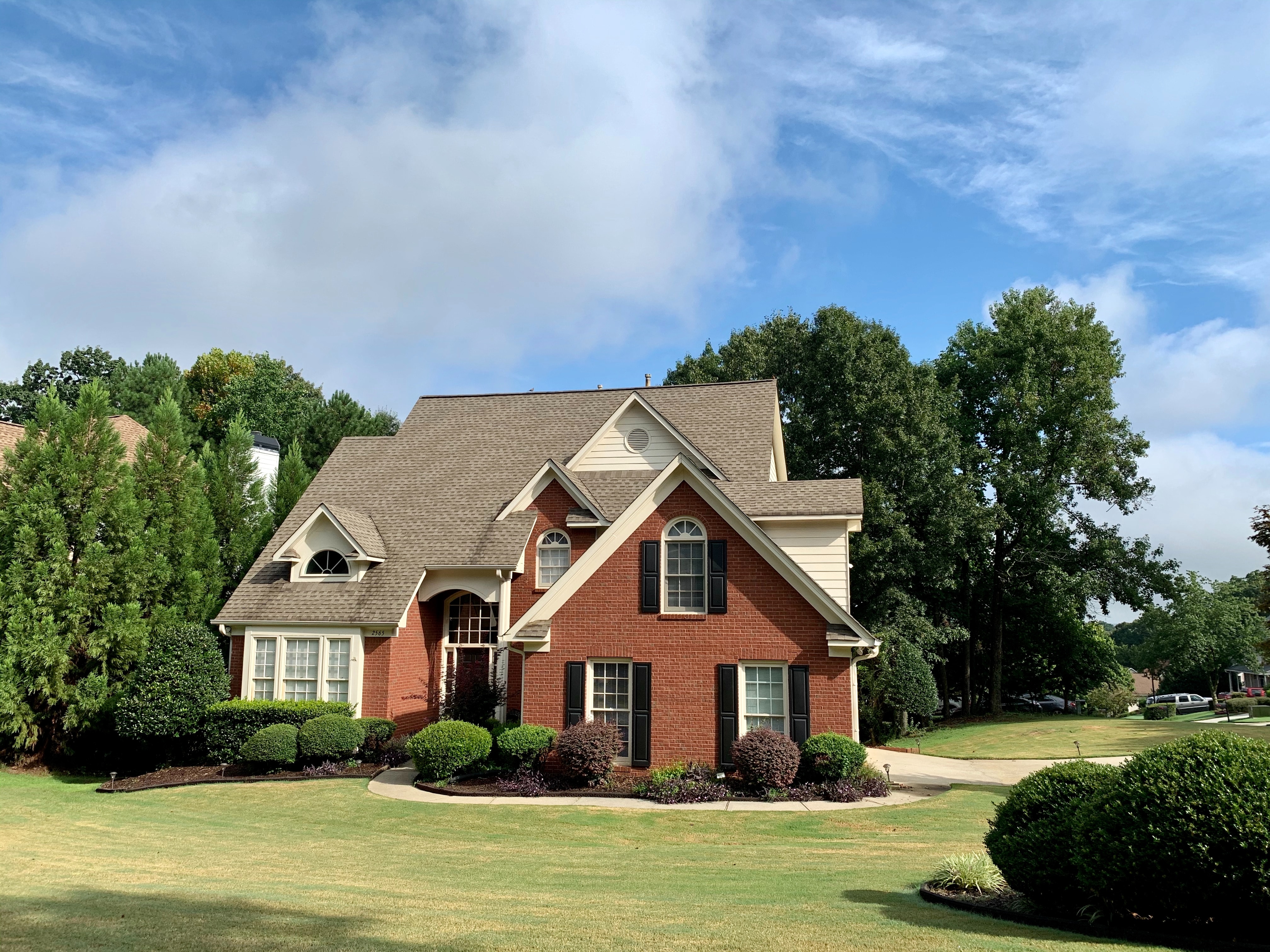
Into every life, a little rain must fall, or so the story goes. The problem is when the rain falls on an already damaged roof, your life can get complicated in a hurry, causing leaks that can be more than a nuisance in your already busy life. If left unchecked, they can cause everything from structural damage to electrical short circuits to black mold. Sounds like fun, right?
That being said, the first sign of a leaky roof doesn’t necessarily mean it’s time to have your roof replaced. Sometimes all that needs to be done is to seal the leak or replace damaged or missing shingles. RoofCrafters has been repairing and replacing roofs for over 30 years, and we know that oftentimes, there’s a simple fix. Some of the time, though, a roof may require a total replacement.
If you’re reading this article, you may need a little help assessing the state of your roof and deciphering whether or not your need a minor repair or total replacement. In just a few short moments, you’ll learn a 7-point checklist that includes everything you need to know regarding the health of your roof, and if it’s time for a replacement. Let's get started, shall we?
How Can I Know If I Need a Roof Replacement?
Let’s delve into a 7-point checklist to help you better understand when a repair just isn’t enough.
1. Visual Inspection
While leaks are indeed a sign that your roof system is less than ideal, before you jump to the conclusion that the stain on your ceiling is due to faulty shingles, you need to determine what caused the leak. Nine times out of ten that requires climbing onto the roof. Unless you look up at your roof and notice that some shingles are cracked, bent, or missing, it’s time to take to the roof.
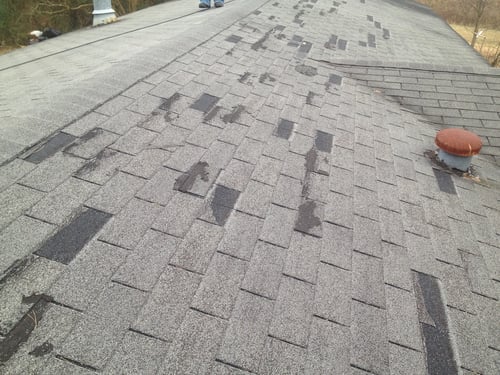
Once up there, it’s important to look not only at the shingles but at everything else on top of your roof. Sometimes leaks aren’t due to shingle failures. They can also be caused by faulty flashing or worn seals around pipes or skylights. If you're unsure about visually inspecting your own roof, be sure to schedule a professional inspection with a reputable contractor.
2. Check Your Gutters
Another thing that can cause water intrusion is something as simple as a clogged gutter. If your gutters can no longer shift the rain off your roof, they can let the precipitation back up to the point where it can get beneath shingles that are otherwise in perfect working order. If you see any standing water on the roof or your gutters are full of leaves and debris, you need to resolve the issue before you point the finger at your roof.
3. Trim Your Trees
If you go outside only to find a tree limb lying on top of your roof, it’s pretty obvious what created the leak. However, if you do detect bent, broken, or missing shingles without finding evidence of what did the damage, you need to try to figure out what caused the damage in the first place.
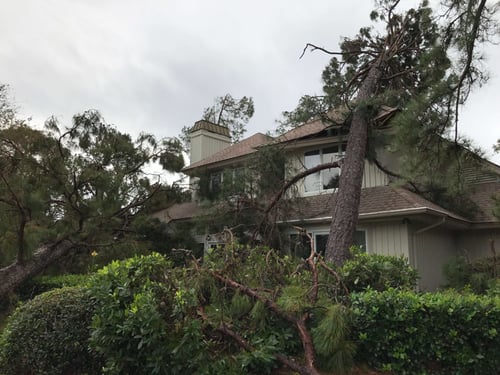
While old shingles are more apt to fail, if you have trees that stand near your home, it’s possible that limbs blown off during a storm caused the damage. That means if you replace the shingles without pruning the offending limbs, you could wind up with another leak the next time a passing thunderstorm rolls through your area.
4. Has Your Roof Surpassed Its Glory Days?
A properly maintained roofing system should last around 15 to 20 years or more, provided it was installed properly using quality material. However, if your local roofing company decided to use substandard material, or if your roof is more than a couple of decades old, chances are it’s probably time to replace rather than repair your old roof.
That being said, depending on the extent of damage, sometimes it’s a better bet to replace rather than repair a newer roof, particularly if the damage was done suddenly. Sudden damage caused by wind and weather is usually covered by your homeowner’s insurance, whereas your roof worn out from old age, isn’t covered.
5. Is It Time to Re-Roof?
Reroofing is the process of laying shingles over an existing set without tearing off the initial layer. While legal in many states, there are several things you need to know before considering a roof over. In the first place, if you already have two layers of shingles on top of your roof, it’s not recommended to install a third layer. If your existing roof is waterlogged, blistered, or badly deteriorated, it’s not ok to do a roof-over.
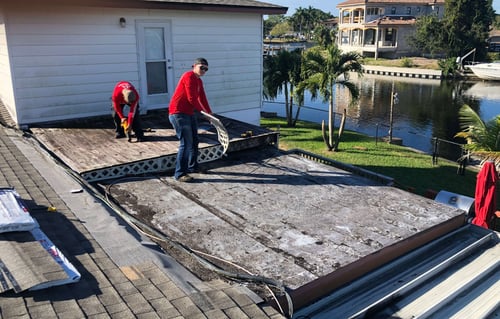
If the roof structure isn’t designed to sustain the added weight of the second layer of shingles, roofing over isn’t an option. The biggest issue with roofing-over is that it doesn’t allow your local roofing company to detect damage below the initial layer of shingles. That means if there’s any rotted wood lying beneath the shingles, you’ll never know it until the roof collapses under the added weight. It can also make it more difficult for you to sell your home when the time comes to put your home on the market.
6. Should You Replace Damaged Shingles?
While replacing damaged shingles with new ones isn’t all that complicated before you climb up on your roof to repair yourself, there are a few things you need to know. There’s a big difference between a few damaged or missing shingles and a leak that has caused damage to several layers of your current roofing system.
A licensed roofer will not only be able to assess and repair the affected area, but he will also be able to determine the extent of the damage and how to mitigate it. Plus, working on a roof is a dangerous environment for an amateur. That’s why professional roofers wear safety harnesses.
7. To Repair Or Replace, That Is the Question
Some homeowners wonder if they can patch a worn section of the roof rather than having it replaced, or if they want to replace only part of the roofing system rather than replacing the entire roof. Again, this is something that only a licensed roofer is going to be able to determine. Depending on the age, condition, and cause of damage to your existing roof, only the affected area may need to be repaired or replaced.
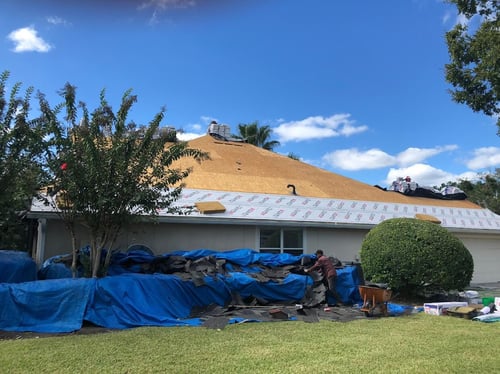
It’s also possible that your insurance company will decide to have the entire roof replaced once they assess the damage. If the leak was the result of storm damage, you should contact your local roofing contractor as soon as possible to determine the best course of action. If the leak was the result of age, a roofer can let you know your options.
Don’t Wait to Repair
Water has a way of finding its way into all sorts of things. Not only can it cause unsightly water spots on ceilings, but it can also damage furnishings, cause electrical shorts, and undermine a building’s structure if left to its own devices. That’s why it’s important to detect and nullify a roof leak as soon as possible. By the time you detect a leak, the water could have found its way to other areas of your home. The longer you wait to deal with a leak, the more serious the repercussions can be.
Still not sure whether you need a roof repair or you need to replace your roof? A good roofing contractor can tell you how soon you need to arrange your roof replacement to avoid further damage to your home. This information will give you a better idea of what you are risking if you wait longer for your preferred type of financing. Ensure you hire the right contractor with RoofCrafter's Top 10 Checklist.
This checklist includes several different prompts to ask your roofer to prepare you to hold the company accountable for its quality of work and services when it comes to your roof repair or replacement. In the meantime, continue learning about your roofing project with our article, "How Much Does It Cost to Fix a Leaky Roof?"
My name is Mitch, and I have over 10 years of roofing experience. I enjoy my career in the service industry because I love helping others take care of their homes and businesses. With over 10 years in the roofing industry, my success comes from my honesty and integrity during my roof inspections. I do my best to listen to the needs of my clients and strive to provide an awesome client experience.




